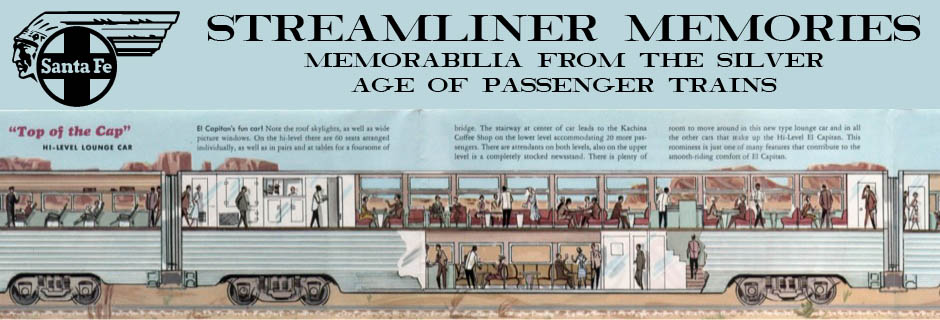The photograph on the cover of this menu shows a scene that few if any passengers riding the Olympian to Seattle would ever see. La Push is in the Quileute Indian Reservation on the Pacific shore and, while it wasn’t … Continue reading
Category Archives: Milwaukee Road
The Milwaukee Road Olympian was named after the Olympic Mountains of northwest Washington, but in 1932 a very different Olympics were held in Los Angeles. This Milwaukee brochure takes advantage of this to compare the railroad’s premiere train with the … Continue reading
When the St. Paul went bankrupt, the receivers asked Coverdale and Colpitts — the company that later wrote a series of reports on streamline trains — to prepare an evaluation of the railway. The report concluded that the railroad’s infrastructure … Continue reading
We’ve previously seen a glorious full-color booklet advertising the 1927 edition of the Olympian. That booklet was dated July 15 for a train that would first enter service on August 1. Click any image to download a 5.2-MB PDF of … Continue reading
1927 was an auspicious year for the Chicago, Milwaukee and St. Paul Railroad. On June 18, it opened the Gallatin Gateway Inn, its entrance into Yellowstone National Park. In August, it began operating the new Olympian, a completely new train … Continue reading
When the Pacific Limited was inaugurated on April 3, 1913, most of Union Pacific’s transcontinental trains connected to Chicago over the North Western line. For some trains, UP’s 1912 timetables also showed connections at Omaha with the Chicago Great Western, … Continue reading
We’ve previously seen an April 1958 Milwaukee Road timetable. This one, from five months later, is four pages shorter. This appears to be due more to a rearrangement of the contents than to any major changes in schedules. Click image … Continue reading
The Milwaukee Road issued this timetable with the inauguration of its new “speedlined” Olympian Hiawatha on June 29, 1947. To compete with Great Northern, which had introduced its fully streamlined Empire Builder four months before, the Milwaukee hastily put the … Continue reading
Although the fully streamlined Olympian Hiawatha would not be introduced until 1947, the Milwaukee Road introduced lightweight, streamlined cars to the Olympian eleven years earlier. These included some head-end cars, coaches, and the diners that are the subject of this … Continue reading
This gorgeous booklet introduced an all-new Olympian in 1927. In March of that year, the Chicago, Milwaukee, St. Paul & Pacific (nicknamed the Milwaukee Road), had been organized to take over the bankrupt Chicago, Milwaukee & St. Paul (nicknamed the … Continue reading
